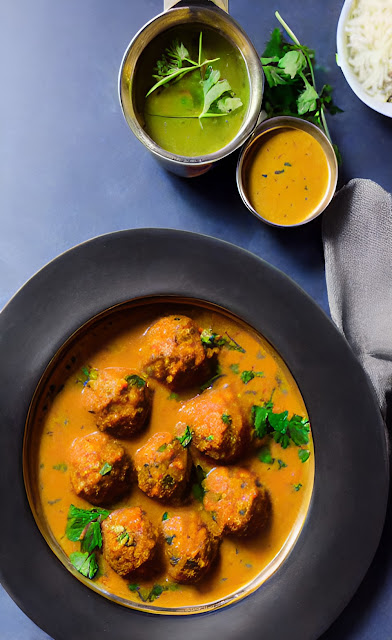Fluden
 |
| Fluden covered with walnuts |
This recipe is characteristic of Ashkenazi Jews (i.e., Jews who lived in Central Europe) and was later brought to the eastern part of the continent during the great German migration of the Middle Ages. In each region, it took on a different name. For example, in Hungary, it is known as Flódni, while in Austria, it is called Fächertorte. The recipes vary considerably among different countries, but in almost all of them, Fluden (or whatever it may be called locally) is a cake composed of alternating layers of dried fruits and fresh fruits.
The great German migration is a little-known fact in many countries but of vital importance in the history of the European continent. It is known as Ostsiedlung (Eastern Settlement, in German) and took place between the 13th and 15th centuries, with peaks extending well into the 18th century. Whether they were invited by eastern kingdoms or out of their own motivation, many Germans settled in areas of the Balkans, Poland, Hungary, Czechia, and Russia, where they were highly valued for their effectiveness in cultivating barren lands, as well as for their skills as artisans and merchants.
For example, when the Mongols ravaged the Kingdom of Hungary and then abandoned it to return to the Asian steppes due to a dynastic dispute, King Geza invited German peasants to his country to replace the decimated Hungarian population. This has resulted in many present-day Hungarians possessing more German genetic heritage than Magyar.
Similarly, German emigrants founded cities in present-day Transylvania, to which the famous Vlad the Impaler (who inspired the Dracula myth) enjoyed extracting wealth from occasionally. It is even possible that the tale of the Pied Piper of Hamelin is nothing more than a metaphor for the great migration of Saxons to Eastern Europe, although some historians suggest it may be a poetic explanation of the gruesome Children's Crusade.
We know that Ashkenazi Jews also joined this German migration, and we know this for certain because the Crusades that departed from Western countries on their way to the Holy Land to liberate it often carried out terrible massacres of Jews wherever they went. This is something that is not usually explained in schools, but the crusaders who "liberated" Jerusalem left behind a trail of innocent murders and even cannibalism that is very difficult to justify "Christianly".
Are there any German communities left in Eastern Europe? Not one. The reason is that during the 19th and 20th centuries, German nationalists and especially the Nazis used the presence of German communities to justify territorial annexation. Therefore, at the end of World War II, the remnants of these communities were urged to leave Poland, Russia, Czechia, and generally all the places where their ancestors had settled. In fact, the medieval migration, which took place over centuries and contributed so much to the places where it settled, was liquidated in just weeks at the end of the war, in a process only comparable to the population exchange between Turks and Greeks. No one was going to leave a germ of what could have been a new and bloody claim for "living space" for the German race.
In Jewish communities, Fluden is generally associated with the festivals of Purim (where the Hebrews celebrate salvation from the Persians) and Hanukkah, which commemorates the restoration or reconstruction of the Second Temple of Jerusalem. It is a very popular sweet where layers made with poppy seeds (a very common condiment in Central Europe and whose flavor strongly resembles nuts) and the few fruits that thrive in the cold north, usually apples and plums, are not lacking.
Although the list of ingredients may seem endless, the truth is that except for the measurements corresponding to the dough, the rest is quite flexible, and it is generally a very easy recipe to make. Here we are going to make three layers (walnuts, poppy seeds, and apple), but if you want, you can make only two. It is important that you keep at least the poppy seed layer (I know you were initially thinking of eliminating this one because if it is the least common product in your cuisine), but do not do it because the dark stripe it forms and its flavor are the hallmark of Fluden.
INGREDIENTS
To make the dough*
- 500 grams (1.1 lbs) of all-purpose flour
- 300 grams (11 oz) of cold unsalted butter, cut into cubes
- 200 grams (7 oz) of sugar
- 2 extra-large egg yolks (or 3 yolks from medium eggs)
- 1/2 cup (100 ml) of dry white wine
- 1 and 1/2 tablespoons of dry yeast for bread
- 1 tablespoon (20 ml) of brandy, cognac, or another not-too-sweet strong liquor, if possible
- Zest of one large lemon
- A pinch of salt
*This dough is specific to this recipe and cannot be substituted with any other, neither filo, shortcrust, nor puff pastry. If you're in a hurry and have no other choice, you can use shortcrust pastry as an alternative (the one that doesn't rise).
For the poppy seed filling:
- 150 milliliters (3/4 cup) of whole milk
- 50 grams (1.8 oz) of finely ground poppy seeds
- 50 grams (1.8 oz) of sugar
- 1 teaspoon of vanilla extract
For the walnut filling:
- 150 grams (5.3 oz) of walnuts
- 50 milliliters (3/4 cup) of whole milk
- 50 grams (1.8 oz) of sugar
- 2 teaspoons of lemon zest
- 1 teaspoon of vanilla extract
For the apple filling:
- 5 apples, peeled and grated
- 50 grams (1.8 oz) of ground walnuts
- 50 grams (1.8 oz) of sugar
- 1 tablespoon of ground cinnamon
For the glaze:
- 50 grams (1.8 oz) of apricot, peach, or plum jam (to taste)
- 1 tablespoon of hot water
First, let's prepare the dough. In a cup, mix the dry yeast with the wine and the chosen liquor. Set aside.
In a large bowl, sift the flour, add the butter, lemon zest, and pinch of salt. Use a mixer at low speed until the components are well combined (small butter balls covered in flour will form). Then, add the egg yolks and sugar, increase the mixer speed slightly, and continue mixing for about 4 minutes.
Now, it's time to add the wine, brandy, and yeast mixture. Increase the mixer speed and mix until you get a smooth and homogeneous dough. This takes about 5 minutes or so.
Transfer the dough to a flat surface and divide it into 4 equal parts. Each part will be a layer, so if you've decided to make fewer layers, divide accordingly. Wrap each part in plastic wrap and refrigerate for at least 2 hours.
Now that the dough is ready, let's make the different fillings while it chills.
First, let's prepare the poppy seed layer.
In a saucepan over medium-high heat, mix the ground poppy seeds, milk, and sugar, stirring constantly until the mixture thickens like chocolate cream, about 15 minutes. Don't forget to stir, or the sugar will stick and the mixture will turn sour. Once the cream has thickened, remove the saucepan from the heat, add the vanilla, and let it cool completely, stirring occasionally. Set aside.
For the walnut filling, grind the walnuts in a food processor or mortar until they are fine but not oily (grinding or pounding the walnuts releases some of their oil, which we don't want at first). Add the milk, sugar, lemon zest, and vanilla, and stir until well combined. Set aside.
The apple filling is simpler. Grate the apples and mix them with a little lemon juice to prevent browning. Then, place them on a sieve and let them drain their own juice and the lemon juice, assisting with a little pressure.
Now that the fillings are ready, we can assemble the Fluden.
First, preheat the oven to 220°C (428 F) Grease a deep square baking dish about 20 cm on each side with butter. If you have another rectangular or even round dish, you can use it, although square is the norm.
While the oven heats up, let's make the glaze. Mix the apricot jam with the hot water in a small bowl until the jam dissolves. Set aside.
Now, let's assemble the Fluden. Take one of the doughs from the refrigerator and roll it out on a floured surface until it takes the shape of the dish you have. It shouldn't be more than 5 mm thick, so if there's excess dough, trim it.
Place this first layer in the dish and press it down firmly.
Spread the poppy seed layer over it. Use all the cream, and if it's thick, even better.
On top of the poppy seeds, spread another layer of dough rolled out in the same way as the first one.
On top of that, spread the walnut mixture, and again on top of it, the third layer of dough.
Spread the grated apples on this layer, sprinkling cinnamon powder and sugar over them.
Now, it's time to put the last layer of dough, which we pierce so it doesn't rise too much, and brush it with the jam glaze. It's worth mentioning that any order of the layers is correct, so you can choose the one that suits you best.
Place the Fluden in the preheated oven and immediately reduce the temperature to 190°C (374 F). Bake until the top is golden brown, about 45 minutes. Remove from the oven and cool completely on a rack.
The last step, when it's completely cool, is to gently unmold it using a couple of knives or spatulas to separate the cake from the mold. Then, cut it into portions for each of the diners, always serving it at room temperature.
A delicious sweet treat that, despite seeming complicated, you'll surely make more than once.




Comments